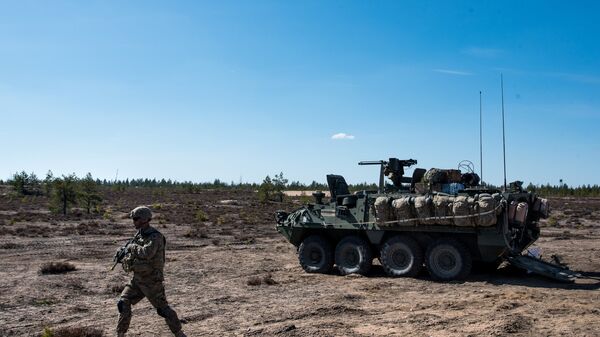Raytheon, which in August won a $5.7 million risk-mitigation contract to conduct the baseline design, described the system as “thin and sleek, it will fire two missiles from a single weapons pod, slashing the cost. The new missile also flies farther, packs more punch and has a better guidance system than the current weapon.” Lockheed Martin, which produces the long-range, tactical, surface-to-surface missiles used by the Army today, also won a contract to develop an LRPF offering.
Scout.com reported on the LRPFs in September, saying that the missiles, scheduled to be operational by 2027, will be able to destroy targets from 500 kilometers away using “missile-delivered indirect precision fires,” according to Dan O’Boyle, spokesman for the US Army Program Executive Office, Missiles and Space.
Updating weapons and shifting focus are part of the Army’s branding of its efforts to prepare for conflicts other than the counterinsurgency wars it has been fighting for some 15 years.
Unlike less-complex battlefields of the past, the US Army is preparing to fight in rapidly changing and complex settings, according to General David Perkins, senior commander of Training and Doctrine Command, Defense News reported.
“The world I grew up in, during the Cold War: you would have ground forces fighting ground forces, air forces fighting air forces. Cyber didn’t even exist when I was a lieutenant,” he said. “What’s happening now is those lines are blurring between those domains.”
Along with overlapping battlespace domains, the Army is also anticipating that all domains will be contested in the battles of the future, the director of the Army Capabilities Integration Center told reporters in a teleconference ahead of the Association of the US Army’s annual conference, which began on October 3.
“If all domains are contested, what that means is the army can no longer rely on other service capabilities to do things that we assumed that they would be able to do,” Lieutenant General H.R. McMaster said, according to Defense News. After the Cold War ended, he explained, the Army began to rely more on other services to supply capabilities in electronic warfare and long range fires, reducing the Army’s own capacity in such areas.
Now, the Army intends to build that capacity back, and long-range surface-to-surface, surface-to-air or shore-to-ship missiles will play a role.
In a sense, the shift represents a return to form for the army, according to McMaster.
“What we are endeavoring to do is to build capabilities into the army to allow the army [to do] what it used to do, and always has been able to do, which is defeat enemy forces on land, secure terrain to deny its use to the enemy, protect populations, consolidate military gains, but, increasingly, to project power outward from land into… aerospace, maritime or cyber space and across the electromagnetic spectrum,” McMaster said, according to Defense News.
Scout.com reported more explicitly that the Army is shifting focus – and weapons development – toward war with a major power. Lieutenant General Michael Williamson, military deputy to the Assistant Secretary of the Army for Acquisition, Logistics and Technology, told Scout.com in August, “We’re developing systems to be prepared for the full range of potential conflict.” Some of these systems, he said, are explicitly geared toward great-power conflict, which would be expected to include combat with mechanized forces, armored vehicles, long-range precision weapons and helicopter air support, among other technologies and tactics.




